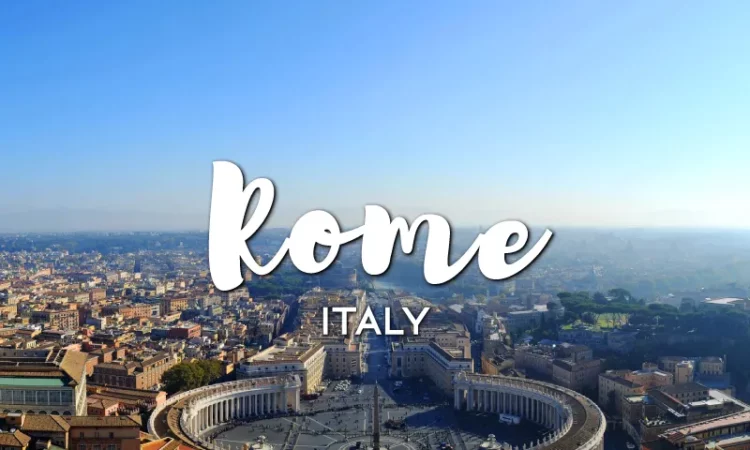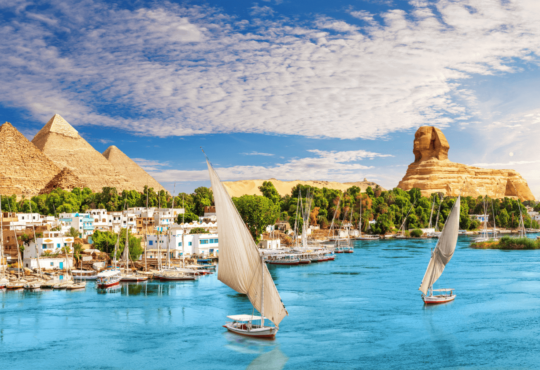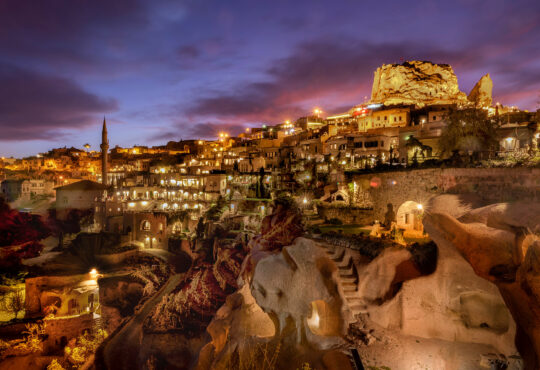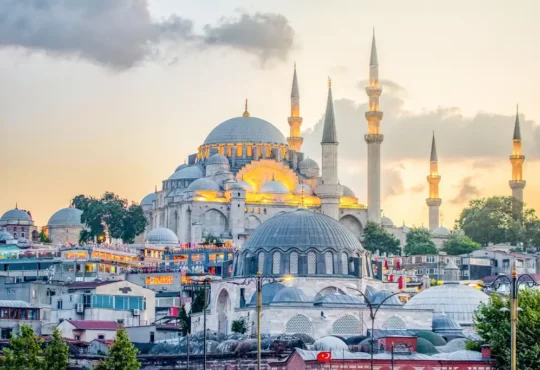
Rome is also called the Eternal City, and it’s the capital city of Italy. It’s called ‘eternal’ because here you can find archaeological sites dating back to the Roman era just a step away from the Fascist buildings and contemporary palaces and museums.
It’s one of the richest cities in history, with culture, and archaeological remains and this is why it’s such a unique place to visit in the world.
Rome keeps attracting visitors from all over the planet for its timeless beauty.
In addition to the most famous attractions and monuments, there are secret corners to discover where fewer tourists get to.
If you have just one day in Rome, considering the size of the city, it can be tricky to understand what to include in your itinerary.
Many people find it difficult to choose between Rome and Venice for their first trip to Italy, but for now, let’s now find out exactly what you should see during one day in Rome.
This itinerary covers some of the best attractions and things to do in Rome with a few extra off-the-beaten-path gems included in it too!
If you want to visit the city properly, and include the most important attractions, one day in Rome is not enough. But let’s also say that one is always better than none!
If you can stop in this city for 24 hours because it’s just a stop on a bigger itinerary or you’re arriving here to move somewhere else in Italy, then in this post you can find the perfect suggestions for one (intense) day in Rome.
If you’re wondering what would be the recommended amount of time to spend in Rome then, at least 4 days. This way you’ll have more time to move around and visit Rome’s sights but also include a one-day or a half-day trip to other places around the Lazio region.
With one day to spend in Rome the best way to move around is on foot. Most of the attractions included in the suggested itinerary are close to each other, and you can easily reach them without taking any public transport.
There are also some of them that are located a bit farther from one to the other. Unfortunately, there are no gondolas in Rome so in this case, you’ll just hop on a tram or bus which is usually the best way to save time and energy.
You can either get tickets valid for 100 minutes for both the underground and bus that costs 1,50 euro or the Roma 24h ticket that will allow you to travel unlimited times for 24 hours and for the cost of 7 euro.
The Colosseum is not only the symbol of the city but of the whole country. Its original name is Flavian Amphitheatre and, during the Roman period was the setting where fierce fights between gladiators and wild beasts were taking place.
Colosseum
This is the largest Roman amphitheater in the world, declared a UNESCO World Heritage Site in 1980.
Just a few meters away from the Colosseum, you can visit the Roman Forum. This represented the heart of the Ancient Capital and the location of religious, political, and commercial activities. Today it’s possible to visit the forum and get an idea of how life was in Rome around 500 b.C.
Roman Forum
Close to the archaeological sites, you can find the iconic Bocca Della Verità (Mouth of Truth). This is a large marble mask, depicting a faun’s head, walled into the wall of the church of S. Maria in Cosmedin.
Apparently, this big marble face has holes where the nose and eyes are. It was likely a manhole cover in the Cloaca Massima, one of the largest sewers in all of Rome.
Bocca Della Verità
In the Middle Ages, the legend says that Virgil, one of the greatest poets of Rome, was required to build the Mouth of Truth to dispel doubts about the fidelity of husbands and wives. A folk tale of those times tells that a beautiful young woman, the wife of a Roman patrician, had been accused of adultery.
Her husband wanted to test her with the Mouth of Truth and see if she was innocent as she was stating. Just at the time of the trial, a young man that was her lover kissed her but when she put her hand inside the marble mouth, it didn’t close, proving her innocence.
The Pantheon is another symbol of Rome, an incredible building of the Roman period adorned with a majestic dome and a colonnade. Its dome is the largest ever built in reinforced concrete, with a diameter of 44m. Initially, the Pantheon was a Roman temple.
Pantheon
The origin of its name is Pan which means ‘everyone’ and Theon ‘divinity’, in fact, the building is a monument dedicated to all the divinities. It was built at the behest of the emperor Hadrian between 118 and 125 AD.
It was then consecrated as a church in 609 AD. Inside you will find the imposing tombs of Vittorio Emanuele II, Umberto I (former Italian kings), and Raphael, the famous painter.
The famous Trevi Fountain is the largest and most famous Roman fountain. Even if the structure that we can see today dates back to 1732, its origins are much older, and can be found at the time of the ancient Romans! The Trevi Fountain appears in a scene of a very successful Italian film known worldwide ‘La Dolce Vita’ by Fellini.
It’s a long and established tradition to throw a coin inside the fountain. What you should do is with your back to the fountain, and toss your coin to ensure a second visit to Rome.
The Trevi Fountain can be visited 24 hours a day and it’s recommended to visit at night when the piazza is almost desert. It’s worth noting that only a few people know that it’s only one visible part of the Virgin Aqueduct, an engineering masterpiece from the Roman era.
Trevi Fountain
From the Trevi Fountain, in just 8 minutes on foot, you can reach one of the most iconic and romantic places in Rome: Piazza di Spagna. You can not miss the walk to reach the top of the monumental Spanish Steps also called the Trinità dei Monti.
In total there are 135 steps that lead to the Trinità Dei Monti Church. In the heart of the square, you can admire the beautiful Fontana Della Barcaccia, built by Pietro Bernini and his son Gian Lorenzo Bernini. From here, you can then take Via Dei Condotti, one of the most famous luxury shopping streets in Rome.
Piazza di Spagna and Spanish Steps
It might not be one of the most popular public squares of Rome, but definitely, one worth visiting. It’s located at the beginning of Flaminia street and it represented the entrance of the city in the Roman era. In the middle of it, you can see the oldest Egyptian obelisk of Rome dating back to XIII b.C.
Piazza del Popolo and Terrazza del Pincio
To really enjoy the beauty of the square, climb the grand staircase that leads to the Pincio Terrace, from which you can enjoy a splendid view of the whole city. From this terrace, you can stroll around one of the largest parks in the city part of the Villa Borghese.
Castel Sant’Angelo, also known as the Mausoleum of Hadrian, is one of the most important museums in the city. The castle has seven levels, and by visiting it you can find all about the history of Rome.
From here, you can admire wonderful panoramic views, inside it walk around splendid frescoed rooms and learn all about curious elements of historical value.
Castel Sant’Angelo
Considering that you’re only spending one day in Rome, you might not have enough time to visit the museum, but you can admire its architecture from the outside. From here, you can easily reach the Vatican City and St. Peter’s Basilica, your next stop on the itinerary.
The Vatican City is one of the smallest countries in the world and the seat of Christendom. The most important church in Rome is St. Peter’s Basilica and it’s considered one of the symbols of Christianity. The wonderful dome can be spotted from all around the city.
St. Peter’s Basilica
The entrance to the Basilica is free of charge (from October to March 7: 00-18: 30, from April to September 7: 00-19: 00). Take some time to visit the inside where incredible Renaissance and Baroque masterpieces like the Pietà and the dome of Michelangelo are kept.
Just a few steps away from the Basilica, you can also visit the Vatican Museums, some of the most famous in the world. With one day in Rome, you won’t have time for this museum as it takes a couple of hours to visit it.
Piazza Navona is one of the most popular squares of the city, the place where you can relax and have an aperitivo, surrounded by Baroque sculptures and architecture.
The highlight is the Fountain of the Four Rivers by Bernini, where are represented the most important rivers in the world: the Ganges, the Danube, the Rio de la Plata, and the Nile.
To conclude your one-day in Rome itinerary, cross the Ponte Sisto and arrive in the Trastevere neighborhood, one of the most authentic places in Rome. Here you can immerse yourself in the true Roman soul.
Piazza Navona and Trastevere
There are many traditional taverns and nice bars where to have a drink and enjoy the last few hours left in Rome.
Your 1 day in Rome itinerary schedule should look something like this.
- 8am to 10am – Colosseum and Roman Forum
- 10.30am to 11am – Bocca della Verità
- 11.30am to 12pm – Pantheon
- 12pm to 12.30pm – Trevi Fountain
- 1.30pm to 2pm – Piazza di Spagna and Spanish Steps
- 2.30am to 4pm – Piazza del Popolo and Terrazza del Pincio
- 4pm to 4.30pm – Castel Sant’Angelo
- 5pm to 6pm – St. Peter’s Basilica – Vatican City
- 6.30pm to 10pm – Piazza Navona and Trastevere
It is right in thinking that Rome could be done as a day trip from Venice but it is not the best use of time. It would be far more worth it to stay at least one night in the capital city if you are thinking of traveling to Rome from the city of canals and bridges.
Even though one day in Rome is not enough to dedicate the right amount of time to some of these attractions, you can still pass by and admire them from the outside.
Rome is a city that never stops fascinating its visitors and keeps attracting more and more tourists from all over the world for its ‘eternal’ beauty.
This is a complete itinerary with a mix of popular attractions and lesser-known spots of the city that are really worth to be discovered.
Written by Maddy From Venice Travel Tips
Like it? Share it!





